General accounting
III. 11. The basic concept of transaction
Video
The "atom" of activity of the firm is the transaction. Most usually it is an exchange between the firm and the rest of the world. The life of the firm is a long sequence of transactions, recorded first of all in the Journal. Of course the firm has other activities, like hiring an employee, which are not recorded in the accounting system.
From now on, in our learning of accounting, the firm under consideration will be a shop selling products (goods) with no physical transformation. The value added by the shop will be: selection of the articles, transportation, storing, displaying, assisting clients, etc.
At the end of the course we shall see which slight adaptations are to be made for the accounting of manufacturing firms.
Depending upon countries, the legal structure may vary a bit. In the Anglo-Saxon world we shall look essentially at sole proprietorships (firms with one owner, who usually is also the manager). In France the usual structures for small firms are Eurl ("Entreprise unipersonnelle à responsabilité limitée") and Sarl ("Société à responsabilité limitée").
The activity of a small shop consists in buying goods, various equipment, and work (from the shop workforce), and selling the goods at a higher price than their purchasing cost, in order to turn a margin which will cover the other costs and also produce a profit. The profit is viewed as the remuneration of the capital put into the firm by its owners.
Most transactions are simple, and some are less obvious.
Among simple transactions we have:
- making capital expenditures
- making current expenditures
- borrowing money from a bank
Among less obvious transaction we have:
- receiving the initial (founding) capital from the owners
- amortization of fixed assets (machines)
- sales
The basic representation of a transaction is a pair of flows of value, one leaving the rest of the world (ROW) and entering the firm (F), and the other one leaving F to go to the ROW:

basic representation of a transaction
Rule without exception: in a transaction, the two values, coming and going, must have the same monetary measurement.
And don't forget: when you record a transaction, you must make two entries, a credit in one account, and a debit in another account.
It is when we make only one entry that we are getting into trouble. Oftentimes it is tempting to focus on one leg of the transaction (for instance, the selling of products -> sales account), and overlook the other leg (some payment or promise must come into the firm at the same time).
Simple transactions
Examples of capital expenditures
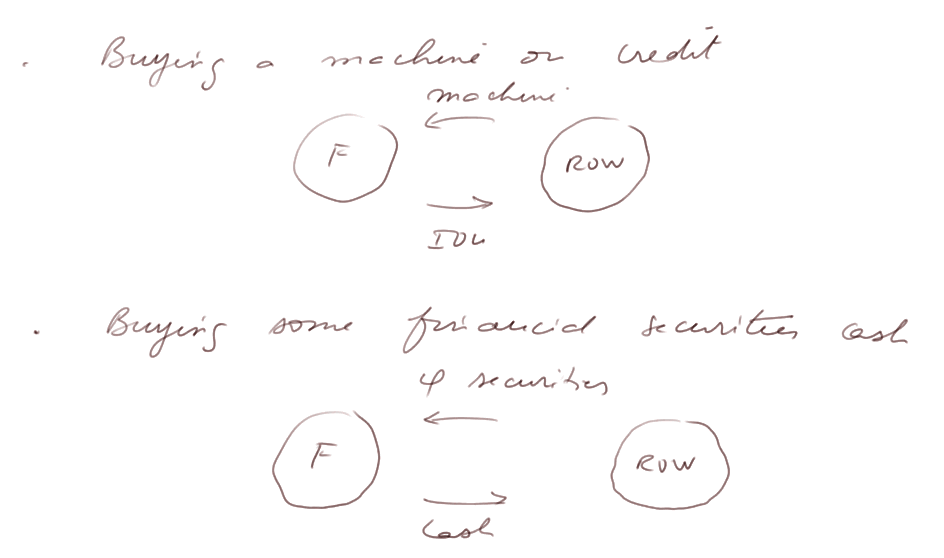
Examples of current expenditures
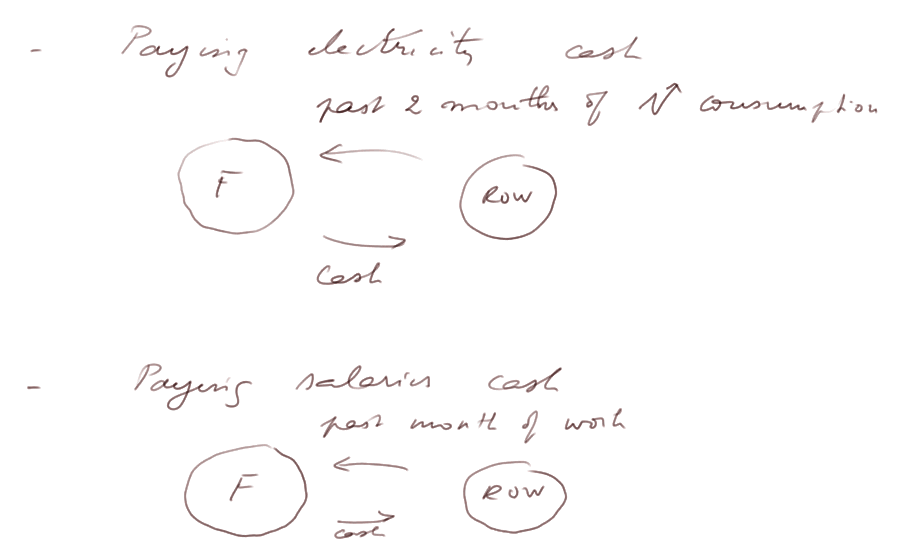
Example of borrowings
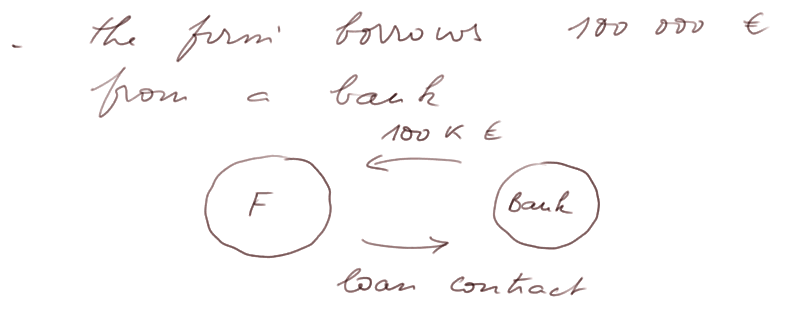
In this example, the loan contract specifies according to which schedule the loan will be refunded by the firm to the lender, and what will be the yearly interest charges. These charges will be part of the current expenditures of the firm.
Less obvious transactions
Less obvious transactions: the case of the initial (founding) capital
At the beginning of the life of the firm, there is a very first transaction: owners putting money into the firm. It is called the initial capital, and it is treated within a transaction: the firm receives money, and the owners (part of the ROW) receive some sort of receipts, called "shares" or "shares of stock" or "shares of capital".
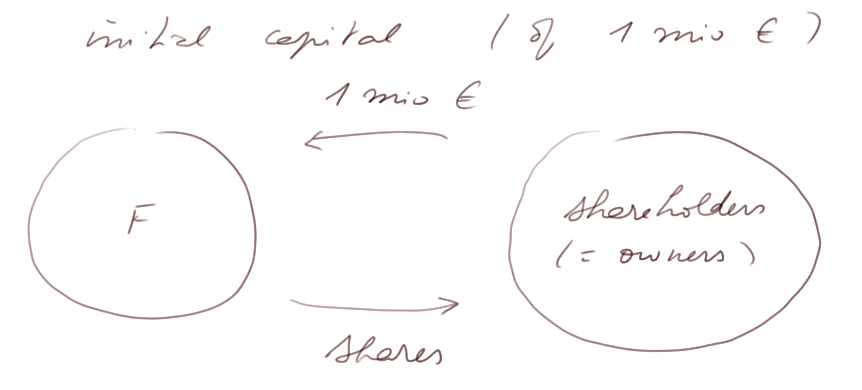
The initial capital will not be refunded to the owners (also called "shareholders"), but they may receive dividends, every year or once in a while. Some firms don't pay dividends, but since their value grows, the owners are satisfied, because they know that in the future they may sell their shares for a good value. Microsoft, which was introduced in the stockmarket in March 1986, for 20 years did not pay any dividends.
Less obvious transactions: the case of amortization
Machines and many other capital assets (but not land) wear out. This is some value leaving the firm which must be taken into account, but which doesn't happen within a standard transaction.
So we shall treat this as special transaction like this:
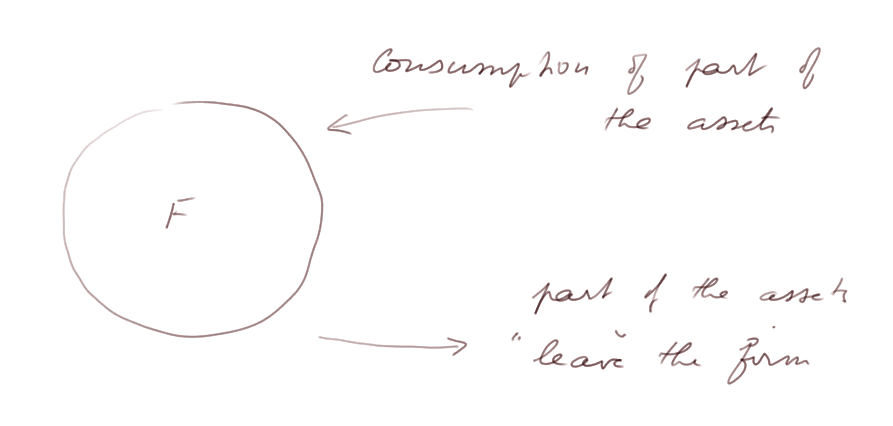
You don't have to feel comfortable with this kind of transaction right now. For the time being, just be aware that amortization is a special type of transaction. We will see that they are in truth very simple and natural.
Less obvious transactions: the case of sales
Since we want to apply strictly the rule "what's leaving = what's coming" (in monetary terms), and obviously when we sell something what comes in (money) must have a higher value than what leaves (some goods), Italian merchants created an astute special account: the sales account
A sales transaction will be recorded like this: money comes in for the goods sold (say, 100€), and we record 100€ leaving from the sales account.
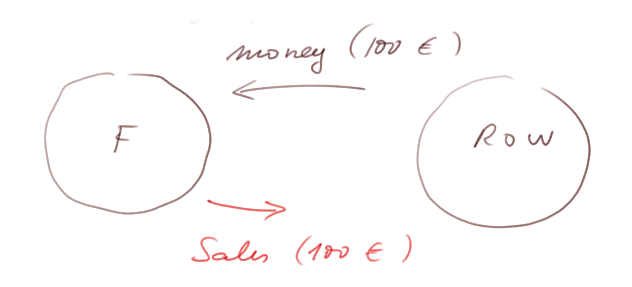
And for the goods actually leaving the firm (the cost of which is, say, 40€) we also record this in a transaction using another special account: the cost of goods sold (COGS)
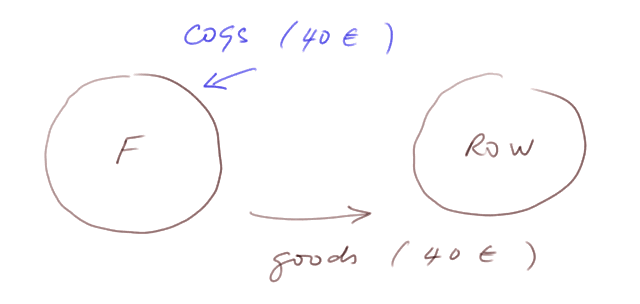
There exist several ways to handle these transactions. We shall see them in due course.
At present, it is not important that you feel comfortable with these transactions. Just be aware that the Sales account and the COGS are special.



